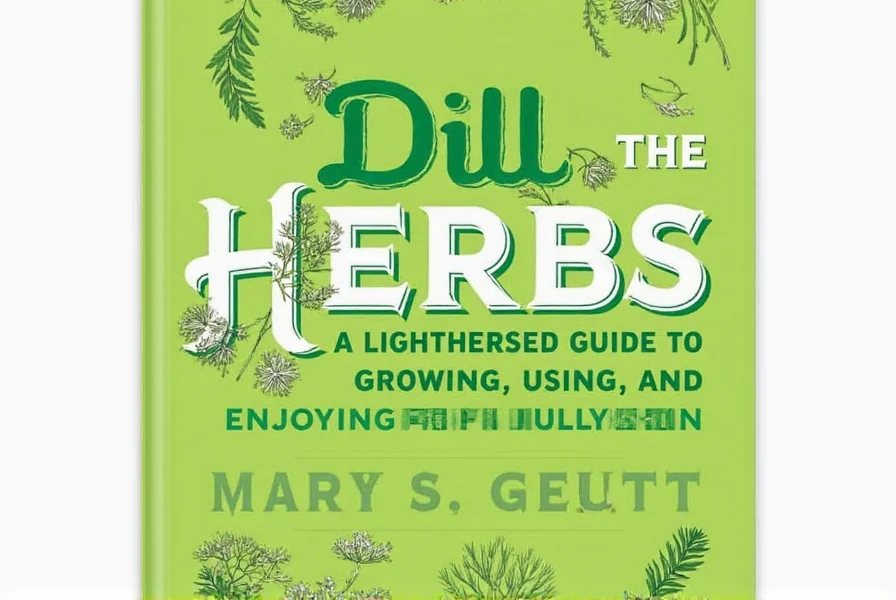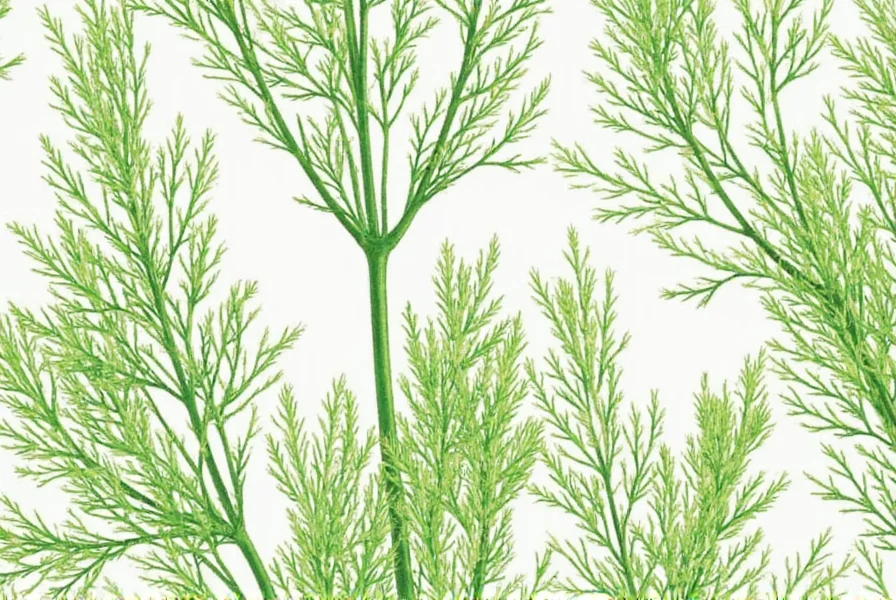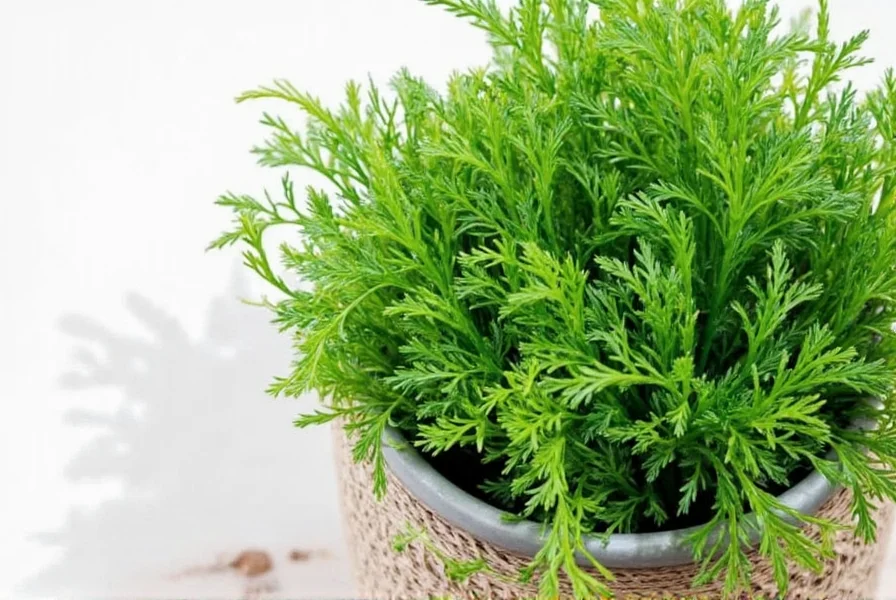Dill (Anethum graveolens) is a versatile herb known for its feathery leaves and fresh, grassy aroma with hints of lemon and anise. Widely used in global cuisines, dill offers both culinary and health benefits. In this guide, you'll learn everything about dill, from its origins to practical uses in cooking, storage tips, and scientific-backed health advantages.
Written by Chef Emily Carter, a culinary expert with 15 years of experience in Mediterranean and Scandinavian cooking.
Table of Contents
- What Is Dill?
- Why Dill Is Essential in Cooking
- Uses in the Kitchen
- Health Benefits: Scientifically Backed
- Buying Guide: What to Look For
- Storing Your Dill Like a Pro
- Common Mistakes to Avoid with Dill
- Fun Facts About Dill
- FAQs About Dill
- Conclusion
What Is Dill?
Dill (Anethum graveolens) is an aromatic herb in the parsley family, native to the Mediterranean and Asia. It features delicate, lacy leaves and a fresh, grassy aroma with subtle lemon and anise notes. The plant produces both leaves (dill weed) and seeds, each with distinct culinary uses. Dill has been cultivated for thousands of years and is now grown worldwide, playing key roles in Scandinavian, Russian, Indian, and Middle Eastern cuisines.

Why Dill Is Essential in Cooking
Dill's unique properties make it indispensable in kitchens worldwide:
- Versatility: Complements fish, eggs, dairy, vegetables, soups, salads, and sauces without overpowering other flavors.
- Flavor profile: Bright, citrusy, and slightly licorice-like—perfect for balancing rich ingredients.
- Texture: Adds delicate texture while maintaining ingredient integrity.
- Visual appeal: Vibrant green color enhances dish presentation.
Uses in the Kitchen: How Dill Does Its Magic
Discover creative and practical ways to incorporate dill into everyday cooking:
Pickling Powerhouse
Dill is synonymous with classic pickles. Its tangy, herby notes transform cucumbers into iconic snacks when added to brine.

Fish & Seafood Enhancer
Dill pairs perfectly with seafood. Sprinkle fresh leaves over baked salmon, pan-seared tilapia, or poached cod to highlight natural sweetness.
Sauces & Dressings
Chop dill into sour cream sauces, yogurt dips, vinaigrettes, or aioli. Try it in dill sauce for seafood platters or fries.
Vegetable Boost
Add brightness to roasted carrots, steamed peas, creamy potato dishes, or garden salads.
Bread & Baking Accents
Incorporate dill seeds into bread doughs or sprinkle on savory scones and focaccia for aromatic twists.
Herb Butter Magic
Mix finely chopped dill into softened butter, roll in parchment paper, and freeze. Use to finish grilled meats, seafood, or warm bread.
| Dish Type | Best Form of Dill | Usage Tip |
|---|---|---|
| Pickling | Fresh dill heads or seeds | Add during brining process |
| Fish | Fresh chopped leaves | Top before serving |
| Cold Salads | Fresh dill weed | Add right before serving |
| Breads | Dill seeds | Mix into dough or sprinkle on top |
| Sauces | Chopped fresh or dried dill | Add toward the end |
Health Benefits: Scientifically Backed
Dill offers more than flavor—its health benefits are supported by research:
- Antioxidant-rich: Contains flavonoids and polyphenols that fight oxidative stress (USDA National Nutrient Database).
- Anti-inflammatory: Studies show potential to reduce inflammation and joint pain (Journal of Food Science).
- Digestive aid: Traditionally used for indigestion; modern research confirms gut health benefits.
- Bone health: Provides calcium and manganese for strong bones.
- Heart-friendly: Fiber content helps maintain healthy cholesterol levels.
Buying Guide: What to Look For When Buying Dill
Find the best dill products with these tips:
1. Fresh Dill
Look for:
- Bright green leaves
- Firm stems
- No yellowing or wilting
- Aromatic scent
2. Dried Dill Weed
Top picks should have:
- Intense green color
- Strong fragrance
- Stored in opaque containers
3. Dill Seeds
Choose seeds that:
- Are whole and unbroken
- Have a strong earthy scent
- Appear dry and not clumped together
4. Organic vs. Conventional
Opt for organic dill to avoid pesticide residues. Herbs absorb chemicals easily, so organic ensures a cleaner product.
5. Brand Comparison Table
| Brand | Type | Features | Best For |
|---|---|---|---|
| Spice Garden Organics | Dried Dill Weed | Organic, non-GMO, sealed pouch | Cooking & baking |
| McCormick Gourmet | Dried Dill Seed | Pure spice, no additives | Pickling & breads |
| FreshHarvest Farms | Fresh Dill Bunch | Locally grown, pesticide-free | Garnishing & salads |
| Frontier Co-op | Organic Dill Seeds | Bulk options available | Home picklers & fermenters |
| Great Value | Dried Dill | Affordable, widely available | General cooking |
Storing Your Dill Like a Pro
Extend dill's freshness with these storage methods:
Storing Fresh Dill
- Rinse gently and pat dry
- Place stems in a glass of water like flowers
- Cover loosely with a plastic bag and refrigerate
- Lasts up to 7–10 days

Freezing Fresh Dill
- Chop and place in ice cube trays
- Fill with water or olive oil
- Freeze and use cubes in soups or sauces
Storing Dried Dill
- Keep in airtight containers
- Store in a cool, dark place
- Lasts up to 6 months
Storing Dill Seeds
- Sealed in a glass jar
- Kept away from heat and moisture
- Can last up to 1 year
Common Mistakes to Avoid with Dill
Even experienced cooks make these dill errors:
- Adding too much at once – Dill has bold flavor; start small and adjust.
- Using old dried dill – Old dill loses potency quickly. Replace every 6 months.
- Overcooking fresh dill – Heat diminishes flavor; add near the end of cooking.
- Ignoring dill seeds – Don't overlook their unique earthy flavor in breads and pickles.
- Washing right before storage – Moisture speeds spoilage. Wash only when ready to use.
Fun Facts About Dill
Discover these interesting dill facts:
- Historically, ancient Greeks used dill to ward off evil spirits and protect children from nightmares.
- The word "dill" comes from Old Norse "dilla," meaning "to lull," referencing its calming effects.
- Dill pairs well with fennel but is a distinct plant—both share licorice notes.
- In Indian cuisine, dill is called "soya" and used in curries and chutneys.
- Dill flowers are edible and attract pollinators to gardens.
FAQs About Dill
Based on common questions from home cooks:
What does dill do in cooking?
Dill adds a fresh, citrusy-licorice flavor that brightens dishes without overpowering them. It works especially well with fish, eggs, dairy, and vegetables, balancing rich flavors while adding visual appeal with its vibrant green color.
Can you eat dill stems?
Yes, but texture varies. Tender young stems can be finely chopped like leaves. Thicker stems are best removed before serving (they become fibrous), though they're perfect for infusing flavor into stocks or pickling brines.
How much dried dill equals fresh dill?
Use one-third the amount of dried dill when substituting for fresh (e.g., 1 teaspoon dried = 1 tablespoon fresh). Dried dill has concentrated flavor but lacks fresh brightness, so add it earlier in cooking.
What dishes showcase dill best?
Dill shines in Scandinavian gravlax, Greek tzatziki, Russian borscht, potato salad, pickles, and roasted vegetables. It's also excellent in herb butter for finishing grilled fish or tossed with boiled new potatoes.
Does dill have real health benefits?
Yes. Dill contains antioxidants like flavonoids, aids digestion, provides calcium for bones, and may help reduce inflammation. While not a cure-all, regular use contributes to a nutrient-rich diet (USDA National Nutrient Database).
How do you keep dill from going bad too quickly?
Treat fresh dill like flowers: trim stems, place in water, cover loosely with a plastic bag, and refrigerate. Change water every 2 days. For longer storage, freeze chopped dill in oil cubes. Never wash dill before storing—it accelerates spoilage.
Conclusion: Dill Does So Much — Why Not Give It a Try?
From the kitchen to the medicine cabinet, dill truly does it all. Whether you're using it to jazz up your favorite dishes or reap its health benefits, this humble herb deserves a spot in your spice rack and pantry.
Remember to buy fresh, store smart, and use wisely—and don't be afraid to experiment with dill in new recipes. After all, dill does more than you think—and once you start using it regularly, you'll wonder how you ever cooked without it.
Now go ahead and grab that bunch of dill… your next amazing dish is waiting!










 浙公网安备
33010002000092号
浙公网安备
33010002000092号 浙B2-20120091-4
浙B2-20120091-4